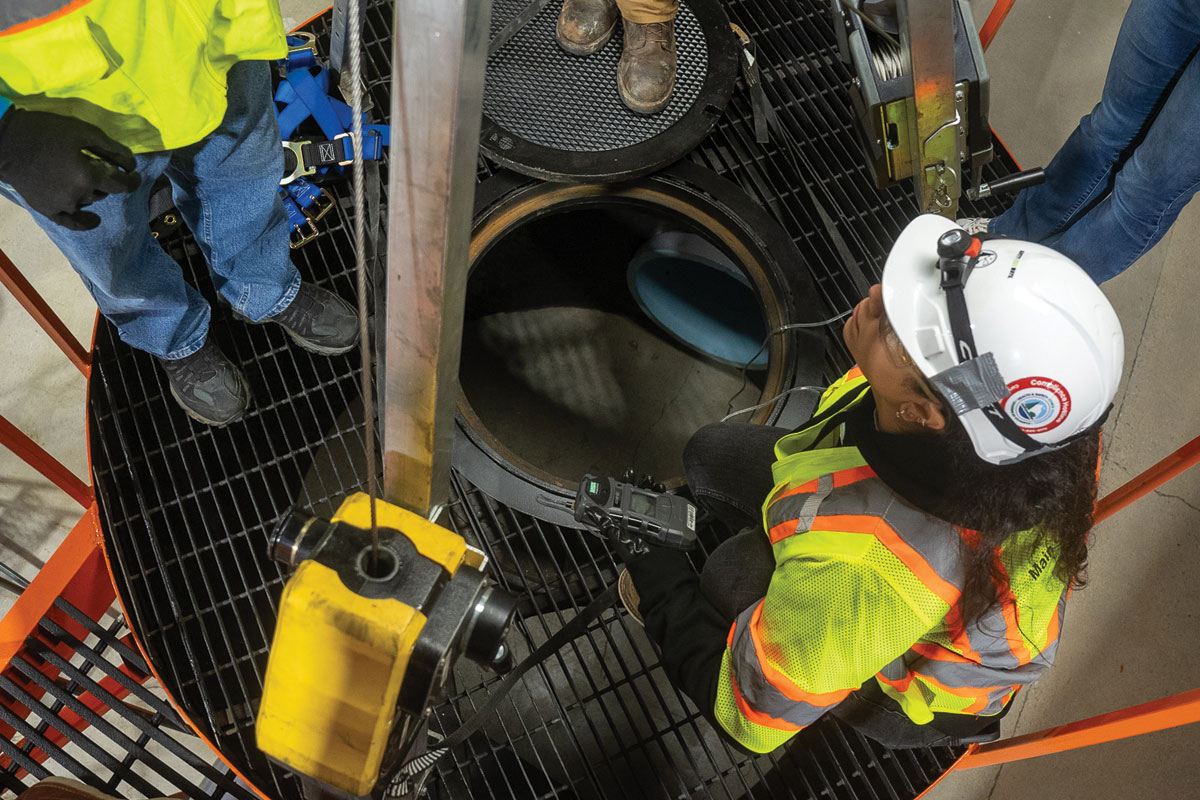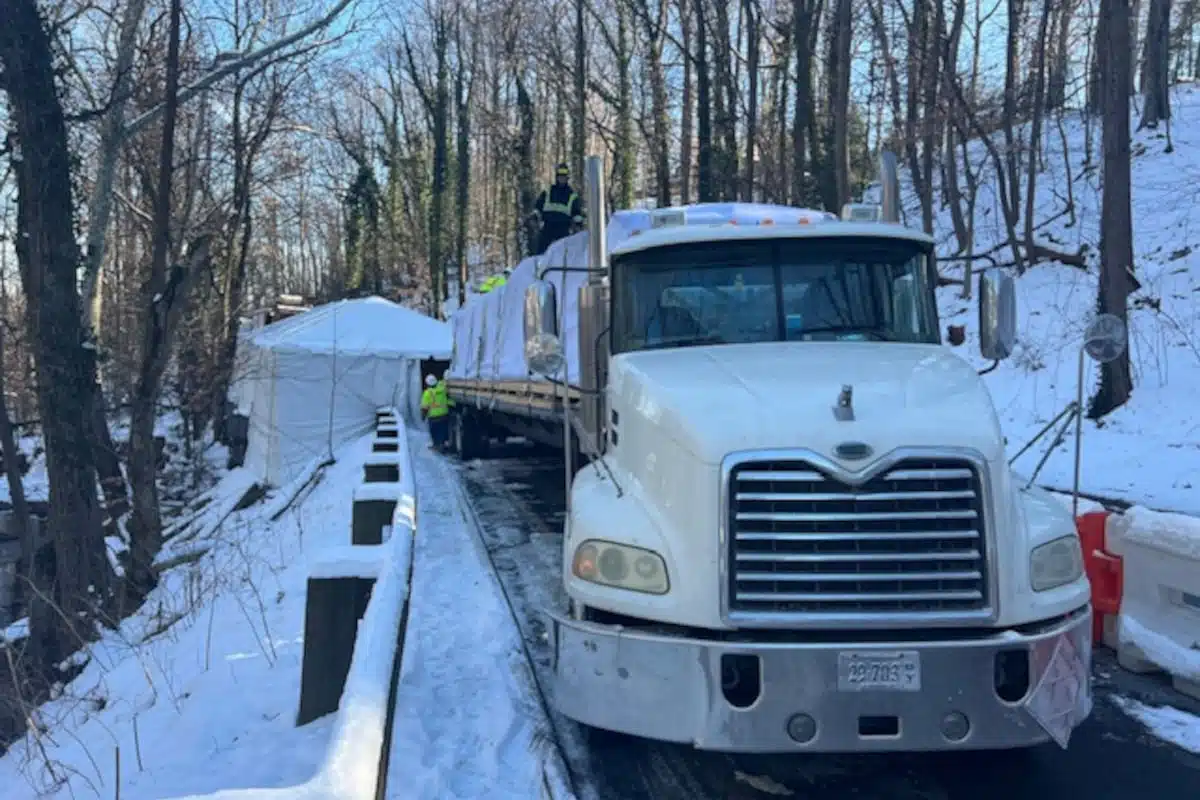
Relining in Arizona
March 8, 2015
As part of its role in providing clean and safe drinking water to residents and business, the City of Mesa, Ariz.’s Water Resources Department regularly inspects water delivery infrastructure to monitor its condition and facilitate prioritization of maintenance and improvement projects.As part of this process, the City discovered that a 42-in. diameter pre-stressed concrete cylinder pipe (PCCP) waterline for the Pasadena Reservoir — which fills the reservoir from the Val Vista Treatment Plant — suffered from deterioration in the segment that passes through the Park Centre Casitas development. Because the existing pipeline passes through a developed area with limited clearance from existing homes, the City determined that removal and replacement of the pipe using open-cut excavation methods was not feasible. Additionally, the depth of the pipeline — some 25 to 30 ft below ground surface — would have increased the cost and disruption of performing the repair by open digging.
Pressure Infusing Lining
B&F Contracting Inc. (B&F) of Phoenix was the general contractor for the City of Mesa. B&F and its subcontractor, Jenco Construction of North Las Vegas, Nev., proposed a trenchless option using the Pressure Infusion Lining System developed by Warren Environmental Inc. of Carver, Mass. The Pressure Infusion Lining System involves epoxy combined with a carbon fiber lining to create a structural rehabilitation. At the 2014 NASTT No-Dig Show in Orlando, the lining system received a Joseph L. Abbott Jr. Innovative Product Award because it eliminates the need for wet-out facilities, over the road transport of weight restricted materials, refrigeration concerns and the need for steam or boiler trucks. The NSF epoxy is much safer for over the road transportation and is mixed at the application head.
“This system is unique in that it provides a seamless repair,” said Andy Michalsky, P.E., of Jenco Construction, a licensed applicator for Warren Environmental. “There are some carbon fiber repair methods that involve applying layers of carbon fiber on top of each other and building it out, but this is one continuous product. And because it is seamless, it is very strong in compression with superior ductile properties.”
Michalsky estimated that in this particular case, the total thickness of the repair was about 200 mils (0.2 in.), which provided a structural repair without overly constricting the capacity of the pipeline.
At the 2014 NASTT No-Dig Show in Orlando, the Pressure Infusion Lining System received a Joseph L. Abbott Jr. Innovative Product Award because it eliminates the need for wet-out facilities, over the road transport of weight restricted materials, refrigeration concerns and the need for steam or boiler trucks.

Jenco recently completed a project in Mesa, Ariz., that involved the repair of 30 ft of 42-in. pipeline using the Pressure Infusion Lining System – a first installation of its kind.
Step by Step
Before beginning any repairs, it was necessary to prepare the line. This involved removing any accumulated scale and muck. Additionally, because this is a man-entry pipe and personnel are required down-hole, arrangements for ventilation, retrieval and other safety measures were taken.
The first step of the rehab process involves lining the interior of the existing pipe with a layer of epoxy — Warren S-301, which is NSF-approved and has a 30-year history in the water and wastewater industry. The epoxy can be spray-applied by an operator or applied using a robotic “spincaster.” In this case, Jenco elected to use the spray-apply method.
One of the challenges, Michalsky said, was making sure that the epoxy was applied at the correct temperature, which was no small feat considering the material was being heated on the surface and had to be transported down the 25- and 30- ft hole and 450 ft horizontally to the area where the repair was needed.
“We have to heat our product before it is pumpable,” Michalsky said. “So to ensure that it maintains its temperature when it gets to the nozzle, we have to set up heater hoses and circulation pumps. Otherwise, the product will lose temperature as it goes through the 3/8-in. line.”
After the epoxy has been applied — and before it cures — a carbon fiber roll is inserted. A bladder positioned inside the carbon fiber is then inflated, expanding the carbon fiber into the epoxy layer. The pressure of the bladder impregnates the carbon fiber with the curing epoxy to create adhesion and an air-tight seal. Once the epoxy is given time to fully cure and bond with the carbon fiber, the bladder is deflated and an additional top coat of epoxy is applied to protect the liner from scouring.

The Pressure Infusion Lining System involves epoxy combined with a carbon fiber lining to create a structural rehabilitation.
On the Mesa project, spark testing and adhesion testing were performed to ensure that no pinholes or voids were left behind the liner. Jenco crews began the project on a Friday and completed the repair on Wednesday.
“We were able to complete the repair within the allotted time, which allowed the City to get the pipeline back in service on schedule,” Michalsky said.
The Pressure Infusion Lining System can operate in pipes ranging from 2 in. to 10 ft in diameter and in lengths ranging from 10 to 700 lf. The Mesa project, which involved a length of 30 ft of 42-in. pipeline, marked the first installation of its type. The result was a great success.
Jim Rush is editor of Trenchless Technology.




